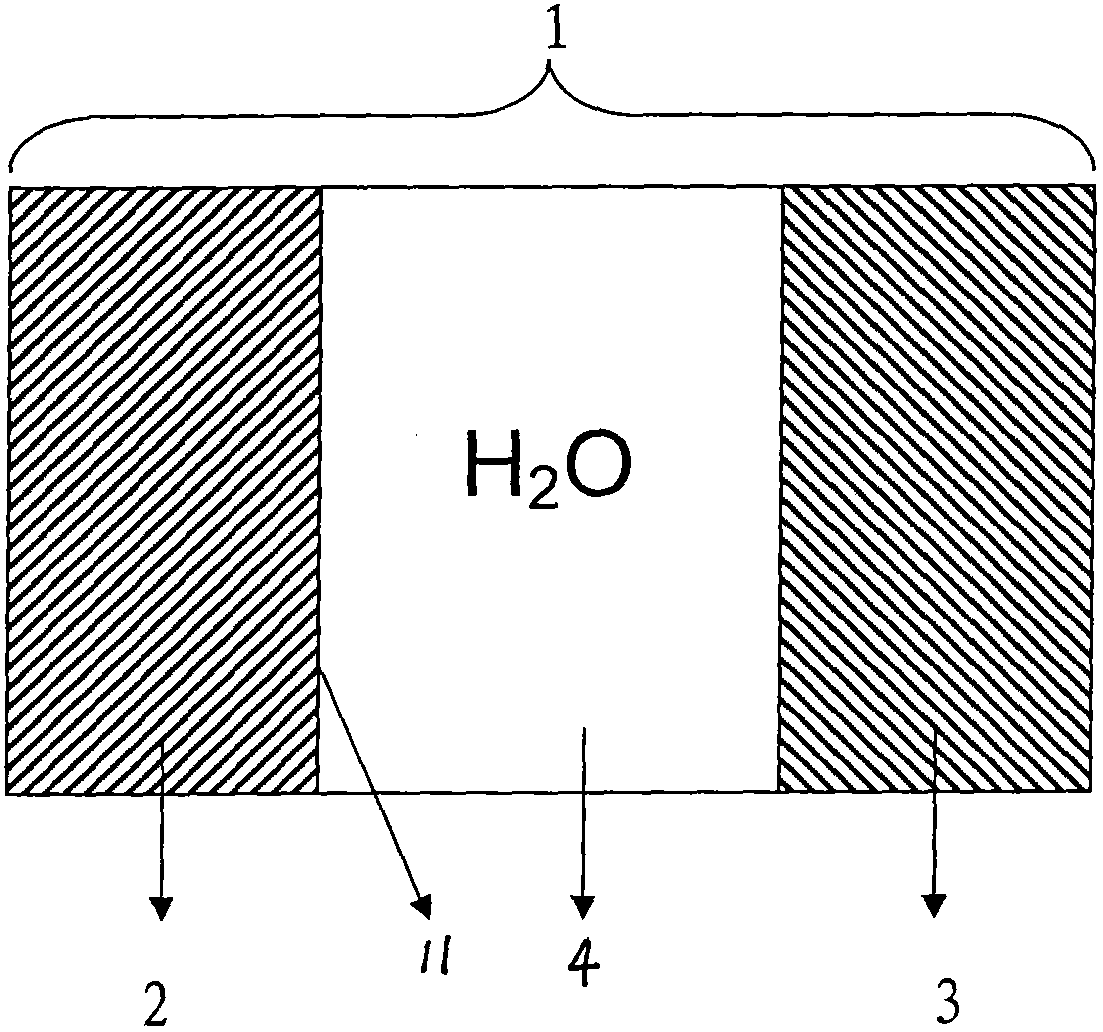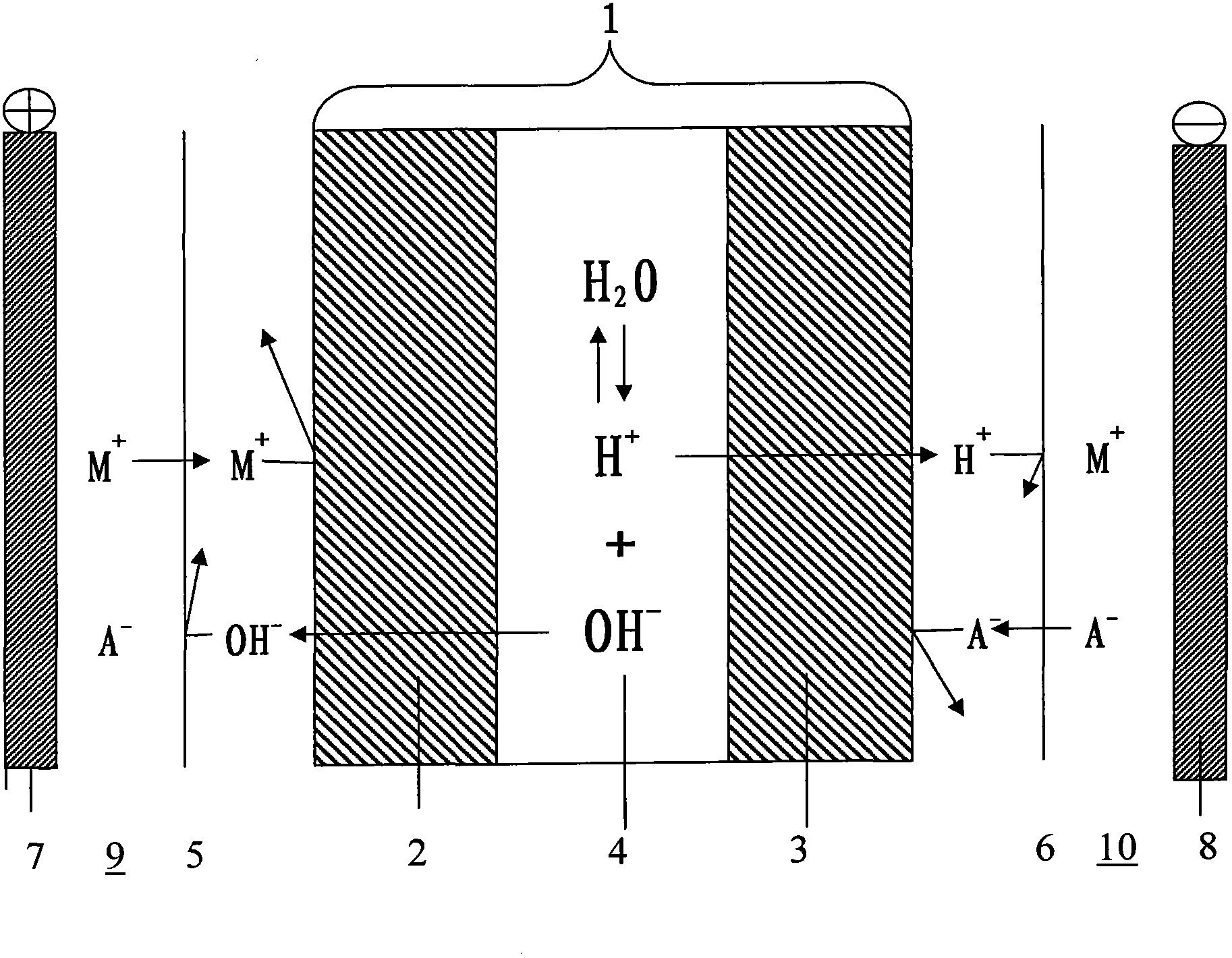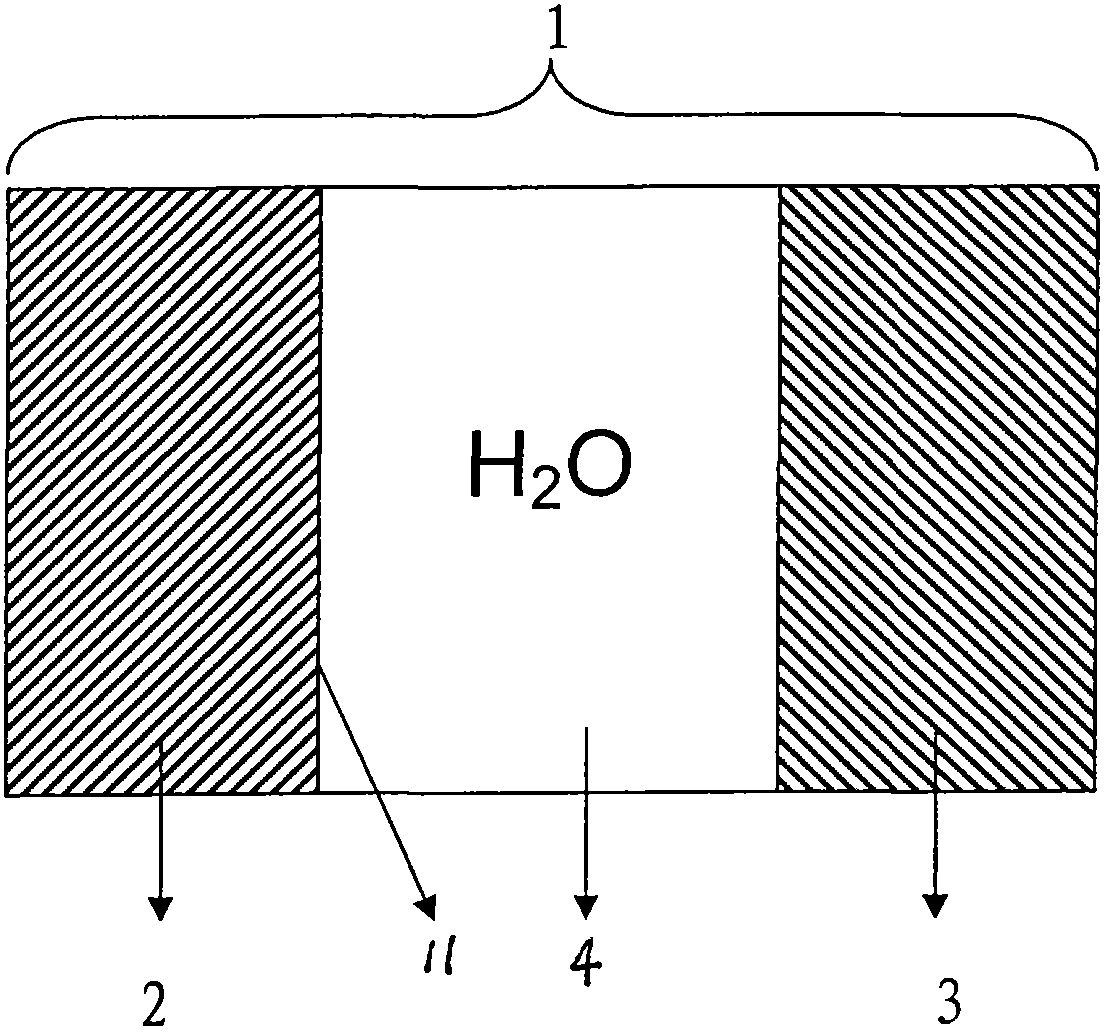Method for manufacturing monolithic bipolar membrane
A bipolar membrane, manufacturing method technology, applied in chemical instruments and methods, membrane technology, semi-permeable membrane separation, etc. To achieve the effect of easy large-scale industrial production, lower impregnation temperature, and safe operation
- Summary
- Abstract
- Description
- Claims
- Application Information
AI Technical Summary
Problems solved by technology
Method used
Image
Examples
Embodiment 1
[0030] 1, the preparation of raw material film: with 3 kilograms of commercially available polyethylene granules (melt index 0.75-1.2) and 2 kilograms of commercially available ethylene and octene copolymer (brand POE-8003) elastomer containing 20% octene in Mix in a granulator, melt (temperature 190-220° C.) and granulate to obtain a granular blend. Next, heat the granular blend on a casting machine (temperature 190-250° C.) to melt, and cast to obtain a blended gold film of 0.18±0.01 mm, which is a self-made raw material film.
[0031] Cut the self-developed polyethylene and ethylene and octene copolymer elastomer blend film into 800mm×400mm, with a thickness of 0.18mm, and put multiple sheets together with styrene, divinylbenzene (crosslinking agent, the content is benzene 5% of ethylene) and benzoyl peroxide (initiator, content is 0.5%-1% of styrene amount) in the stainless steel tank of the solution that forms, at room temperature (about 25 ℃) leave standstill 3 hours, ...
Embodiment 2
[0036] Adopt polyethylene and ethylene and octene copolymer elastomer (containing 20% octene) blended film (elastomer content is 40%), operation procedure is according to embodiment 1. The impregnation time of the basement film was 2 hours, and the impregnation rate of the basement film was 60%. Sulfonation conditions, chloromethylation and amination conditions are all the same as in Example 1. The negative ion exchange capacity of the obtained bipolar membrane was 1 meq / g dry film, the positive ion exchange capacity was 1.2 meq / g dry film, and the transmembrane voltage drop was 1.9V.
Embodiment 3
[0038] Adopt polyethylene and ethylene and octene copolymer elastomer (containing 45% octene) blended film (elastomer content is 45%), the operating steps are as in Example 1. The impregnation temperature of the base film is 30° C., the time is 3 hours, and the impregnation rate of the base film is 70%. Basement film sulfonation temperature is 80°C, time is 5 hours, chloromethylation temperature is 50°C, time is 16 hours, aminated with 30% trimethylamine aqueous solution containing 6% dimethylamine, temperature is 35°C, time is 10 hours, to obtain The bipolar membrane has a positive ion exchange capacity of 1.6 meq / g dry film, a negative ion exchange capacity of 0.7 meq / g dry film, and a transmembrane voltage drop of 1.8V.
PUM
 Login to View More
Login to View More Abstract
Description
Claims
Application Information
 Login to View More
Login to View More - R&D
- Intellectual Property
- Life Sciences
- Materials
- Tech Scout
- Unparalleled Data Quality
- Higher Quality Content
- 60% Fewer Hallucinations
Browse by: Latest US Patents, China's latest patents, Technical Efficacy Thesaurus, Application Domain, Technology Topic, Popular Technical Reports.
© 2025 PatSnap. All rights reserved.Legal|Privacy policy|Modern Slavery Act Transparency Statement|Sitemap|About US| Contact US: help@patsnap.com



